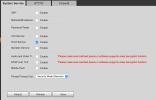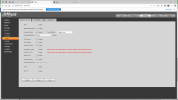I also had a AMDVTENL16-S5 16 Channel NVR Dahua on the same network at the cameras. I did not have p2p enabled on that, it doesn't have any extra users added to it. On a side note, while documenting my camera network (ip, model, mac address) I found this NVR on the network I forgot about which was causing my cameras to change their encoding to H265 instead of H264, causing BI to use a lot of CPU time.
Dahua DHI-NVR4116-4KS2/L NVR, 80Mbps/80Mbps (16-Channel Ip Video Inputs)
I bought this because of the price. I tested it, and would not recommend it to anyone. You can only view 4 cameras at a time on web, a lot of camera disconnect and have to manually be reset.
Yeah, a 16 channel NVR with only 80Mbps bandwidth is robbery. That is way too low.









